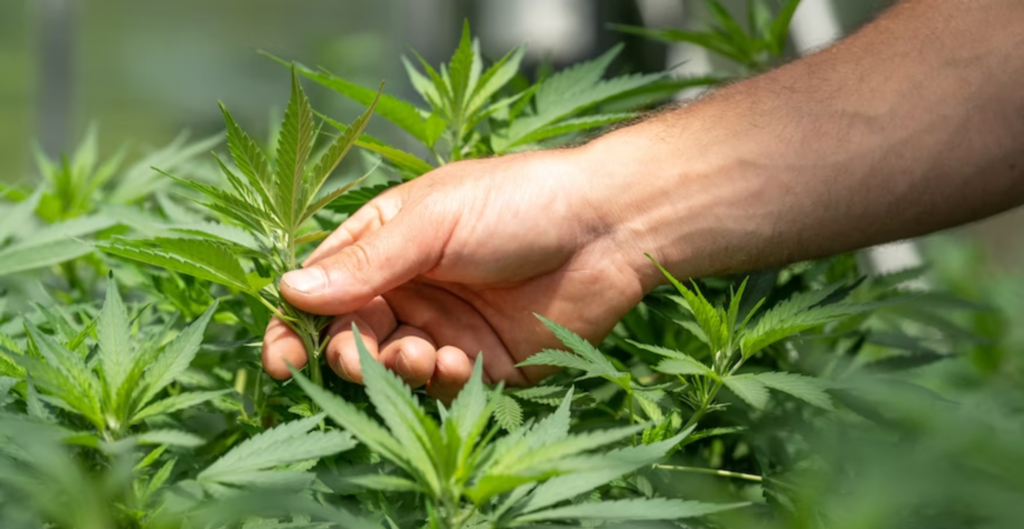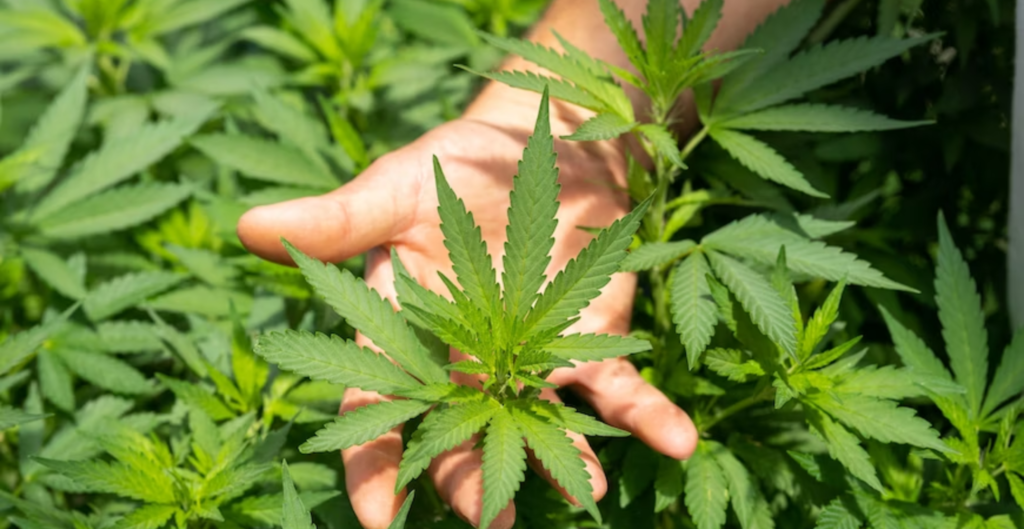Deodorize, And Sanitize Cannabis Facilities – 2023 Guide

As the cannabis industry continues to grow, emerging technologies and sanitizing solutions are being developed to protect personnel and consumers from potential contamination. Chlorine Dioxide (ClO2) is a powerful oxidizer and disinfectant increasingly utilized in cannabis facilities due to its broad-spectrum antimicrobial capabilities. Chlorine Dioxide Deodorize, And Sanitize Cannabis Facilities: ClO2 has been proven effective against viruses, fungi, bacteria, and spores, making it the ideal choice for eliminating harmful contaminants in any production environment. In addition to sanitizing surfaces and equipment, ClO2 can be used as a deodorizer and a sterilant.

By controlling the amount of ClO2 applied with precision, operators can ensure they are using the correct concentration for the application, ensuring maximum efficacy and safety. When used as directed, ClO2 is a safe and effective solution for preventing the spread of pathogens in cannabis production facilities.
Sanitizing Solutions:
The cannabis industry is increasingly adopting chlorine dioxide (ClO2) sanitizing solutions as a safe, effective, and affordable way to prevent the spread of harmful pathogens and keep their facilities sterile. Not only does the use of ClO2 eliminate the need for hazardous chemical cleaning products, but it can also save businesses money in the long run.
Chlorine dioxide (ClO2) is an oxidizing agent and disinfectant with a long history of use in various industries, including food and beverage processing, healthcare, and water treatment. Due to its broad-spectrum antimicrobial capabilities, ClO2 is increasingly utilized in cannabis production facilities to control potential contaminants.

The cannabis industry is changing rapidly as new regulations, and safety protocols are being implemented to ensure the safety of both customers and workers in these facilities. With this evolution, cannabis facilities must have effective sanitizing solutions to prevent the spreading of harmful pathogens such as mold, bacteria, and other microorganisms.
One emerging technology that has proven effective in reducing the risk of illness-causing microbes is chlorine dioxide (ClO2) deodorize and sanitize cannabis facilities. ClO2 is a powerful oxidizing agent that can quickly destroy germs or bacteria on surfaces without leaving behind hazardous byproducts, as traditional chemical cleaning products can.
Cannabis facilities typically have a variety of surfaces that need to be sanitized, from floor mats and benches to tools and other equipment. Using a ClO2 solution as part of their regular cleaning routine helps ensure these areas are free of harmful microbes that could help ill customers or workers.
ClO2 solutions also have the added benefit of providing a residual effect on treated surfaces, meaning they will remain active for up to several days after application. This ensures any newly introduced pathogens are still intact even if additional cleaning has yet to be done regularly as recommended by health experts.
GREENHOUSE, GARDEN, HORT., AND AG. SEEDS, SOIL, HYDRO, AEROPONIC FOLIAGE, FLOWERS, FUNGI.
Use on and around seed bed, soil, rooted and unrooted plants, cuttings, flowers, trimming, planting cubes, fungi, and mushroom propagation, fruiting chamber, perpetual or intermittent grow rooms, curing and drying cannabis, horticultural/agricultural commodities before and after harvest to keep pathogens from entering plants and plant contact surfaces, including appliances, tables, utensils, tools, equipment, glove, hand/shoe dip, in and around nursery, farm, and ranch premises.
The frequency of replenishment is subject to the severity of contamination, volume of plants and surfaces sanitized, as well as dilution concentration achieved. Prepare activated solution to a strength consistent with EPA maximum threshold for rinse or humidification water, to disinfect or inactivate pathogens, for an aqueous solution in water systems to control mold, mildew, slime, biofilm, algae, and fungi (Erwinia chrysanthemi, Phormidium boneri, Penicillium digitatum, Botrytis sp., Fusarium solani, Pythium aphanidermatum, Pythium irregulare, Fusarium oxysporum f. sp., solani, Basilicum (Fob), and to remove field contamination, rinse debris, or soil, provide surface sanitizing on produce, or kill mites and other invasive species.
| Use-Site | For a concentration of | Mix EQUAL PARTS 1:1 – NaClO2 (Part A) and HCl (Part B) |
| Seeds and Planting Cubes | 0.5 PPM | 1 drop A, with 1 drop B in 2 gallons of water |
| Soil Beds and Substrates | 0.25 PPM | 1 drop A, with 1 drop B in 4 gallons of water |
| Plant Foliage and Cuttings |
Light 1 PPM Moderate 2 PPM Heavy 5 PPM |
1 drop A, with 1 drop B in 1 gallon of water 2 drops A, with 2 drops B in 1 gallon of water 5 drops A, with 5 drops B in 1 gallon of water |
| Turf, Benches, Shelves, Pots, Trays, Hand Tools |
Light 50 PPM Moderate 100 PPM Heavy 500 PPM |
50 drops A, with 50 drops B in 1 gallon of water. (2ml = 50 drops) 100 drops A, with 100 drops B in 1 gallon of water. (4ml = 100 drops) 500 drops A, with 500 drops B in 1 gallon of water. (20ml = 500 drops) |
Mix in the bottom corner of a designated plastic mixing container. Let the solution activate for 1 minute before dilution, then fill the container with water. Agitate until mixed. Use aqueous solution to dip, submerge or drench to control and suppress bacteria in a manner consistent with usual standards. Planting cubes/seed-bed require submersion remaining wet for 10 minutes after exposure, OR soaked for 5 minutes, and can be seeded or planted immediately after treatment. For hard, non-porous surfaces treat with an exposure time of 10 minutes at 100 PPM, sanitize 5 minutes at 20 PPM. Frequency of replenishment is subject to the severity of contamination, volume, as well as dilution concentration achieved.
- SPRAY / FOG – allow visible wetness for 5 minutes before drying.
- MOP – allow visible wetness for 5 minutes before drying.
- SWAB / SPONGE – allow visible wetness for 5 minutes before drying.
- SOAK / IMMERSE – allow to drench or submerge for 1 minute.
- FLUSH / FILL – allow to drench or submerge for 1 minute.
- DIP / RINSE – allow to drench or submerge for 1 minute.
REFERENCES.
- Listeria Monocytogenes, Campylobacter Jejuni And Escherichia Coli Stec To Sublethal Bactericidal Treatments. Aberdeen, Scotland. N. Smigic. Sept. 2008.
- Decontamination of Strawberries Using Batch and Continuous Chlorine Dioxide Gas Treatments, Journal of Food Protection. Y Han Jan. 2009.
- Oxidative Elimination of Cyanotoxins: Comparison of Ozone, Chlorine, Chlorine Dioxide And Permanganate, Rodríguez E. June 2007.
- Chlorine Dioxide Gas Sterilization Under Square-Wave conditions. Applied Environmental Microbiology. 56: 514-519 1990. Jeng, D. K. Feb. 1990.
- Escherichia Coli O157:H7 on Radish Seeds by Sequential Treatments with Chlorine Dioxide. Applied Environmental Biology. Jihyun Bang. Sept. 2011.
- Organic 101: Allowed and Prohibited Substances | USDA. Miles McEvoy. July 2022.
- Chlorine Dioxide Reduces Bacteria and Increases Vase Life of Fresh Cut Flowers. Department of Environmental Horticulture, University of Florida. A.J. Macnish. Jan. 2010.
- Chlorine Dioxide as an Alternative Disinfectant for Disinfection of Oyster Mushroom Growing. The Journal of Horticultural Science and Biotechnology, Funda Atila. June 2019.
- The Use of Chlorine Dioxide in Potato Storage, Bul 825. University Of Idaho. Agricultural Experiment & UI Extension Publications. Nora Olsen. Jan. 2001.



